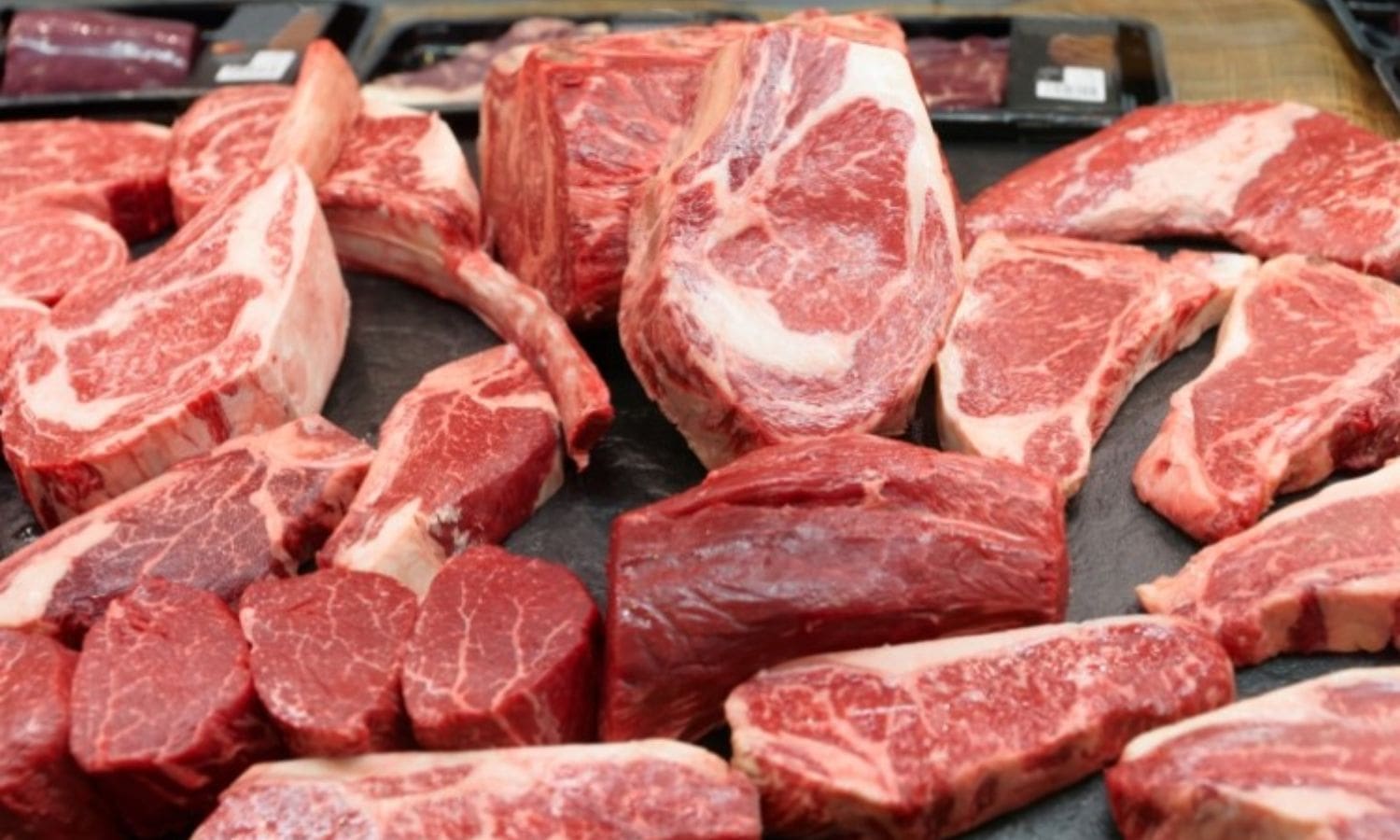US Red Meat Exports in 2024: In the realm of U.S. agriculture, the upcoming year of 2024 is poised to witness a significant shift in the landscape of red meat exports.
The intricate dynamics surrounding U.S. pork and beef exports, examining both the positive trends and challenges that lie ahead.
By analyzing the competition for a reduced beef supply and the strategic decision-making necessary in this critical year, this piece offers a detailed and informative outlook for U.S. red meat exports in 2024.
Key Takeaways Of US Red Meat Exports in 2024
- Pork exports are expected to increase by 4% in 2024, following a robust growth of 8% in 2023.
- The U.S. pork industry is investing in improving production efficiency to meet the rising demand for pork domestically and internationally.
- Trade agreements and market access improvements are opening up new opportunities for U.S. pork exports.
- U.S. beef exports face challenges in 2024 due to declining production, potential demand rationing, and an imbalance between supply and demand. Proactive measures are required to ensure a stable export market.


Also Read: Joby Global Electric Aviation Charging System Lands in Southern California
U.S. Pork Exports Outlook for 2024: Positive Trends
The outlook for U.S. pork exports in 2024 shows promising trends. According to Erin Borror, Vice President of Economic Analysis, there is an estimated four percent increase in pork exports expected for the year. This follows the robust growth of eight percent witnessed in 2023.
The positive outlook can be attributed to several factors. Firstly, the demand for pork continues to rise both domestically and internationally, driven by factors such as population growth and changing dietary preferences. Additionally, the U.S. pork industry has made significant investments in improving production efficiency, ensuring high-quality products that meet global standards.
Furthermore, trade agreements and market access improvements have opened up new opportunities for U.S. pork exports in key markets.
Challenges in U.S. Beef Exports for 2024
Challenges faced in U.S. beef exports for 2024 include declining production and potential demand rationing. According to Erin Borror, the anticipated decrease in production will pose a significant obstacle to the U.S. beef industry’s ability to meet export demands.
This can be attributed to a variety of factors, such as weather conditions, disease outbreaks, and market fluctuations. Consequently, the reduced supply of U.S. beef may result in an imbalance between supply and demand, leading to potential rationing of demand. To further understand the challenges faced in U.S. beef exports for 2024, the following table provides an overview of key factors impacting the industry:
| Challenges | Causes | Implications |
|---|---|---|
| Declining production | Weather conditions, disease outbreaks, market shifts | Insufficient supply to meet export demands |
| Potential demand rationing | Reduced supply of U.S. beef | Imbalance between supply and demand |
Addressing these challenges will require proactive measures from the U.S. beef industry to mitigate production decline and ensure a stable export market.


Competition for Reduced Beef Supply
Amidst the declining production of U.S. beef for 2024, a fierce competition arises for the limited supply among domestic and international consumers. This scarcity of beef has led to heightened tensions and increased demand, resulting in a battle for access to this prized commodity.
The competition for reduced beef supply can be described as follows:
Emotional Impact:
- Anxiety: Consumers worry about the potential scarcity of their favorite beef products.
- Frustration: The limited supply frustrates both domestic and international buyers, as they struggle to secure their desired quantities.
Economic Impact:
- Rising Prices: With a reduced supply, the prices of beef products soar, putting pressure on consumers’ wallets.
- Market Instability: The competition for limited beef supply creates fluctuations in the market, making it challenging for businesses to plan and strategize effectively.
As the demand for U.S. beef outweighs its production, the competition intensifies, with consumers and businesses alike vying for their share of this increasingly scarce resource.
Significance of Exports in Balancing Markets
With exports playing a crucial role in maintaining market equilibrium, the balancing of U.S. red meat markets in 2024 becomes increasingly evident. The significance of exports in balancing markets is multifaceted and essential for the overall stability of the industry.
Firstly, exports serve as a means to signal higher prices across the supply chain. By exporting red meat, producers are able to tap into international markets that may be willing to pay a premium for their products. This increased demand leads to higher prices domestically, benefiting producers and incentivizing them to increase production.
Secondly, exports stimulate the rebuilding of the herd. By exporting red meat, producers can reduce the domestic supply, encouraging herd expansion and ensuring long-term sustainability.
Strategic Decision-Making in a Critical Year
In the year 2024, the red meat industry faces a critical juncture that necessitates strategic decision-making to navigate market complexities and ensure long-term success. As the industry grapples with fluctuations in production and demand, it must carefully consider its approach to both domestic and international markets. This requires a deep understanding of market dynamics, consumer preferences, and global trade policies.
To evoke emotion in the audience, consider the following points:
- Market Volatility: The red meat industry must confront the volatility of the market, which can be both exciting and daunting. Strategic decision-making becomes crucial in mitigating risks and capitalizing on opportunities.
- Global Competitiveness: In an increasingly interconnected world, the industry must make strategic decisions that enhance its competitiveness on the global stage. It must navigate trade barriers, tariffs, and changing consumer preferences to maintain its position as a leading player in the international market.


Conclusion Of US Red Meat Exports in 2024
The outlook for U.S. red meat exports in 2024 is positive for pork but challenging for beef.
While pork exports are expected to see positive trends, beef exports face competition due to reduced supply.
However, the significance of exports in balancing markets cannot be underestimated.
It is crucial for stakeholders in the industry to make strategic decisions in this critical year to navigate the challenges and capitalize on opportunities.
Our Reader’s Queries
Q1. Does US export beef?
Ans. In the realm of U.S. domestic production, beef exports constituted a noteworthy 11 percent share. Notably, in the year 2021, the United States secured its position as the global leader in beef production, ranking as the second-largest importer and exporter in terms of volume.
Our Reader’s Queries
What is the beef forecast for 2024?
According to projections, beef production is expected to decrease by 5.5-6.0 percent in 2023 and a further six to seven percent in 2024. This is due to accelerated heifer retention, which will result in reduced feeder supplies, feedlot production, and cattle slaughter as herd rebuilding commences.
How much red meat does the US export?
In 2023, the US has shipped 2.56 billion pounds of beef, marking a 14.9% decline from the previous year. South Korea, Japan, and China are the top three destinations for US beef exports this year.
What percent of US beef is exported?
In terms of U.S. domestic production, beef exports made up 11% of the total. As of 2021, the United States held the title of the world’s largest beef producer, as well as the second-largest importer and exporter by volume.
Who buys the most American beef?
The United States saw a total of $1.9 billion in sales from Japan, $1.7 billion from South Korea, and $853 million from Mexico, making up 59% of all sales. Unfortunately, Mexico’s economic slowdown and unfavorable exchange rate with the U.S. dollar led to a decrease in beef imports from the United States. However, U.S. exports to Japan, the top importer, remained steady.

